Our road trip to the Eastern Cape in March this year included a 3 night stay in Mountain Zebra National Park near Cradock, only our second stay in this “off the beaten track” National Park, but enough to cement it as one of our ‘new favourite’ parks to visit. What it lacks in Big Five game, other than some introduced lions which are not easily seen and a small herd of Cape Buffalo, it makes up with other animals not generally seen elsewhere including the Zebra after which the park is named and interesting antelope species.
On the birding front, the park is known for its drier habitat species and I was looking forward to doing some atlasing and adding to my year list without much expectation for anything unusual – but as all birders know – ‘always expect the unexpected’ and a bird that had eluded me for many a year was about to become the highlight of our visit ….
What also sets this park apart is the ambience – peaceful yet wild with panoramic views once you reach the plateau, which is at an altitude of about 1400 m, a couple of hundred metres above the main camp. The camp has around 25 comfortable chalets with patios which overlook the plains and distant hills, an ideal spot for some ‘stoepsitter’ birding.
We left Addo mid-morning, initially heading east towards Paterson and joining the N10 National Road heading northwards to Cradock, where we stopped at a coffee shop for a light lunch, then drove the last 12 km to the Mountain Zebra National Park gate. The main camp (pictured in the heading image) is another 12 km along a rather corrugated gravel road which thankfully changed to tarmac for the last stretch.
The reception was efficient and friendly and we soon found our chalet No 20 almost at the top of the gently sloping road that runs through the camp and got ourselves settled in.
After a brisk walk, the air was suddenly chilly with the sun setting behind the surrounding hills, so I donned a jacket and headed to the stoep for a bit of late afternoon birding. The stoep furniture did not match the rest of the chalet in terms of comfort – in fact I’ll go so far as to say the chairs are possibly the heaviest, most uncomfortable ones I have ever come across. However I didn’t let this small detail bother me and carried one of the living room cushioned chairs outside for that all important sundowner time.

The view made up in no uncertain terms for the furniture and with beverage in hand I scanned the surroundings, soon finding a few species typical of the more arid landscape
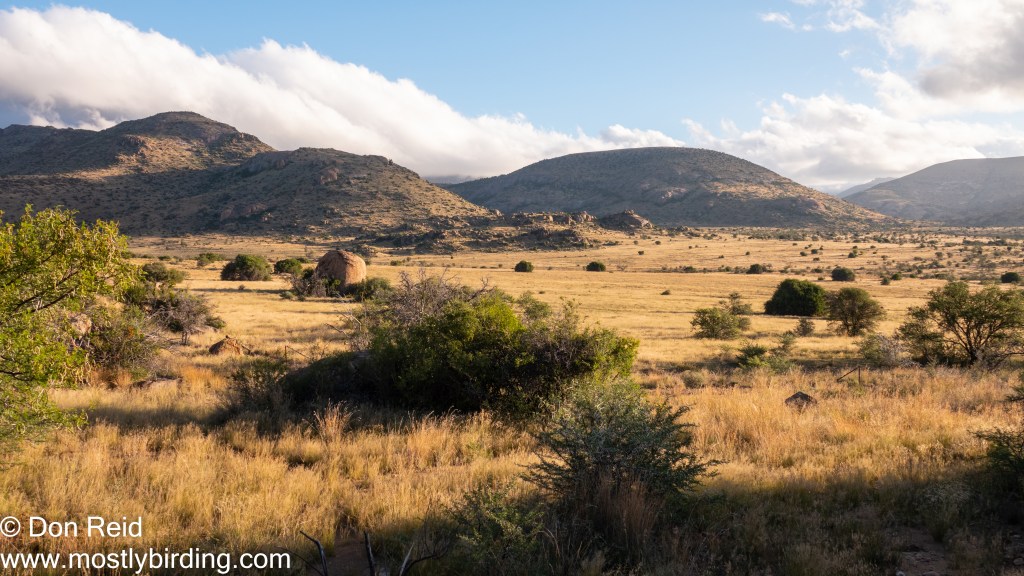

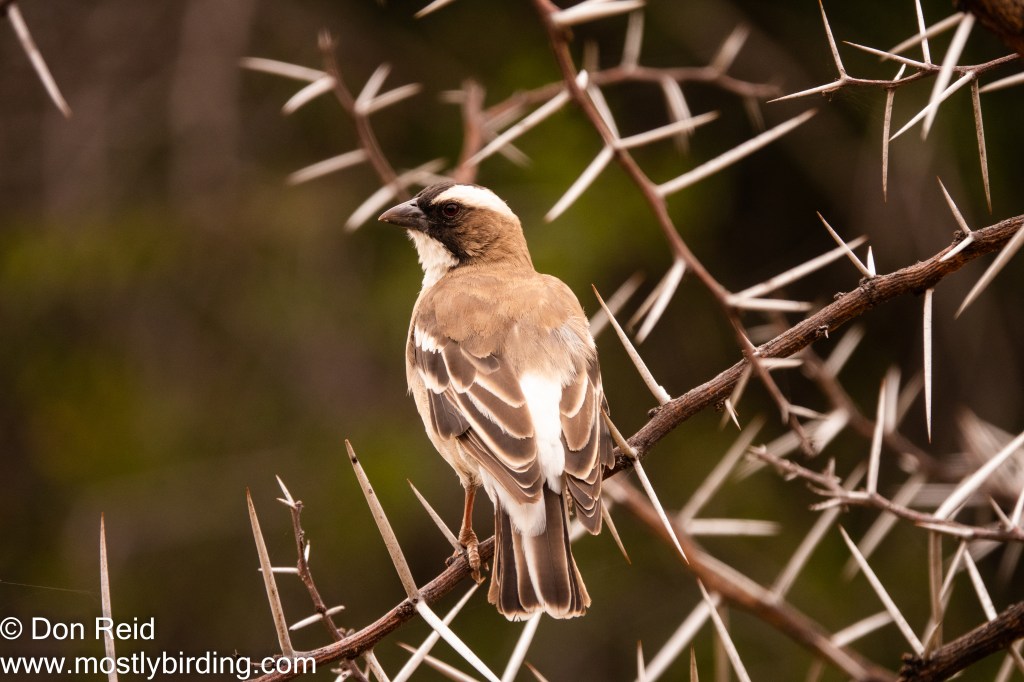
Next morning was very relaxed – being Sunday we were up late-ish and most of our morning was spent on the stoep. Apart from the species already shown, other prominent species were Familiar Chat, Red-eyed Bulbul, Red-winged Starling, Acacia Pied Barbet, Bokmakierie and several others.
Striped Mice crept cautiously out of the low bushes to grab a morsel in front of the stoep, scurrying back to safety at the slightest movement. Using very slow hand/camera movements I was able to get a few shots of these cute creatures. They are also known as four-striped mice based on the four characteristic black longitudinal stripes down their back.
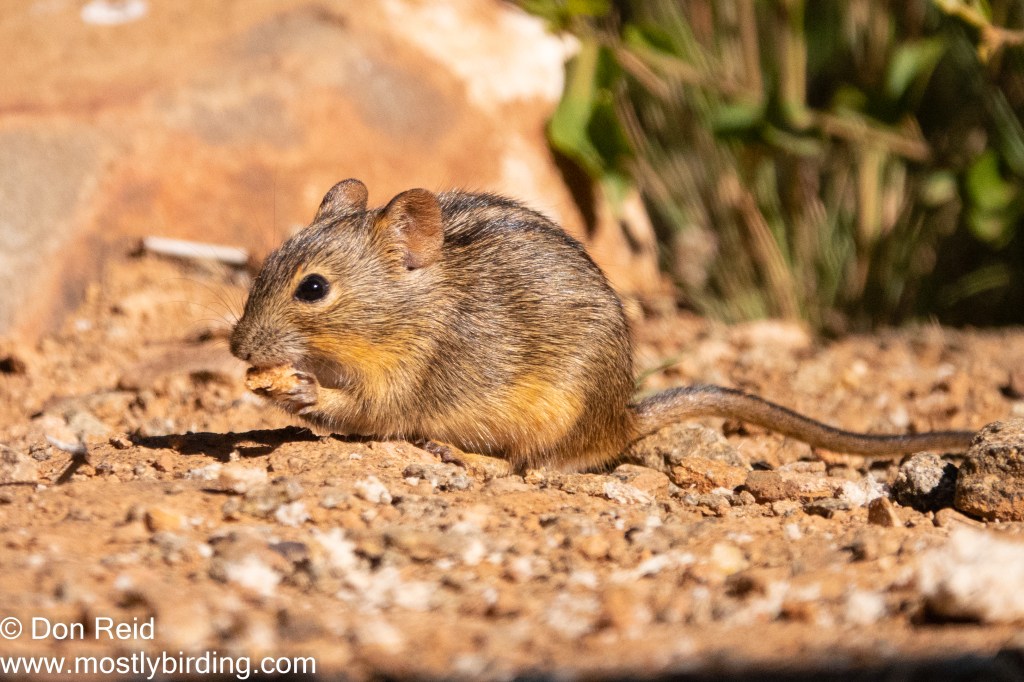
Another striped creature, this time a lizard, put in an appearance alongside the mice, each not taking much notice of the other, probably after small insects that wouldn’t necessarily be on the mice’s menu. With its distinctive stripes, I thought this would be an easy species to identify but the Reptile book I have groups lizards into a few main groups without providing photos of each regional one so I was only able to narrow it down to what I thought was a Mountain Lizard

After lunch we set off on a drive on the Rooiplaat Loop, the most popular circular drive and about 25 km out and back. Before ascending to the plateau we spent some time at the picnic spot near the main camp (also mentioned in my earlier post on the Honeythorn Tree) where a few birds were active, including a lone African Hoopoe – such a handsome bird and always a treat to see, even though they are quite common.
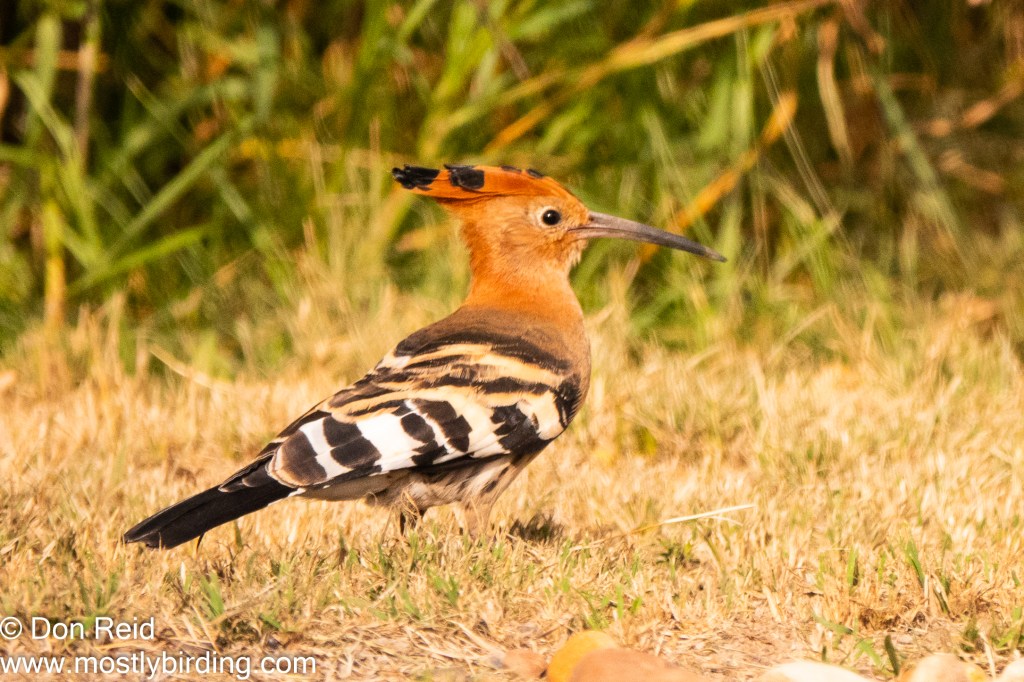
A short way further on we came across a group of Vervet Monkeys including a mother and youngster who posed like pros in the lovely shaded light – I am always drawn to their eyes which look so bright and intelligent.

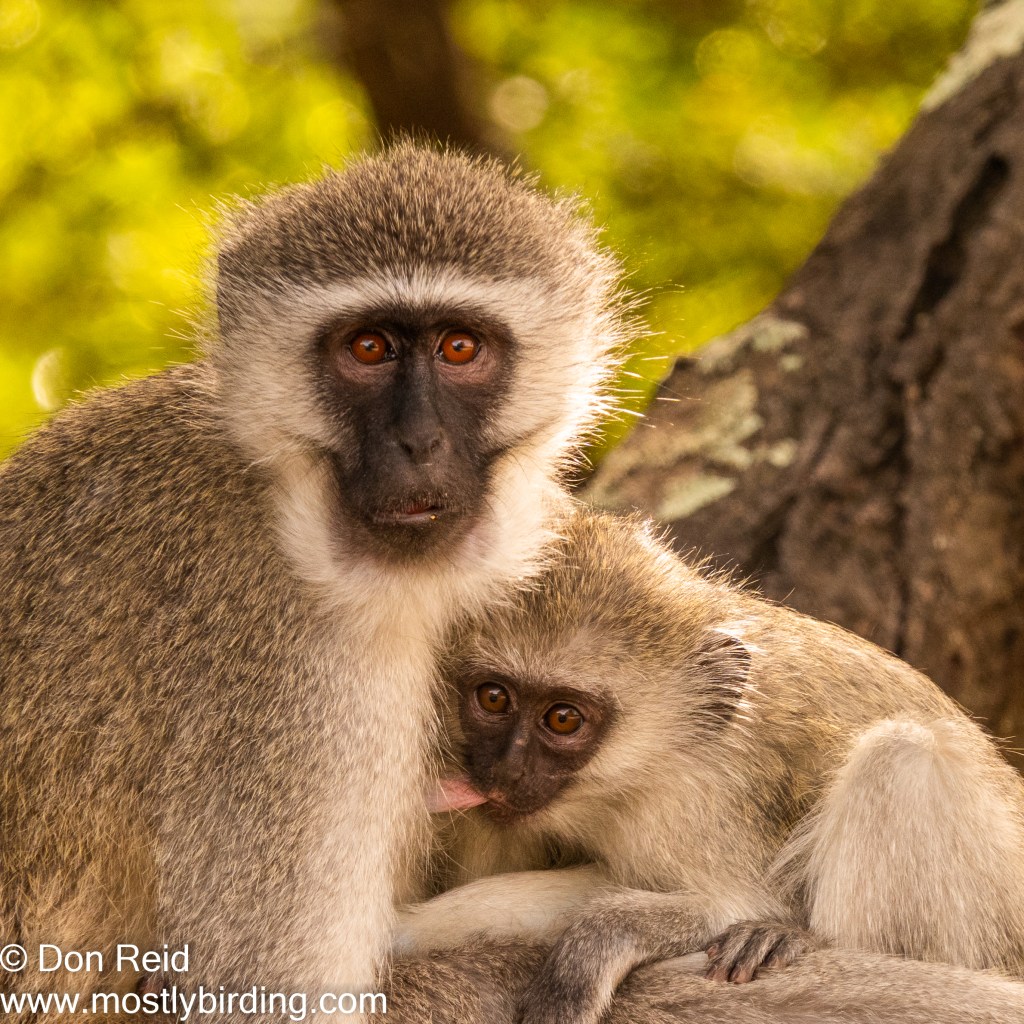
A short climb up the tar road took us to the plateau where the grassland stretched to the horizon, with pockets of game visible in the distance – the return leg took us closer to some of them so I used the opportunity to get some pleasing images, particularly of the Mountain Zebra foal with its parent.
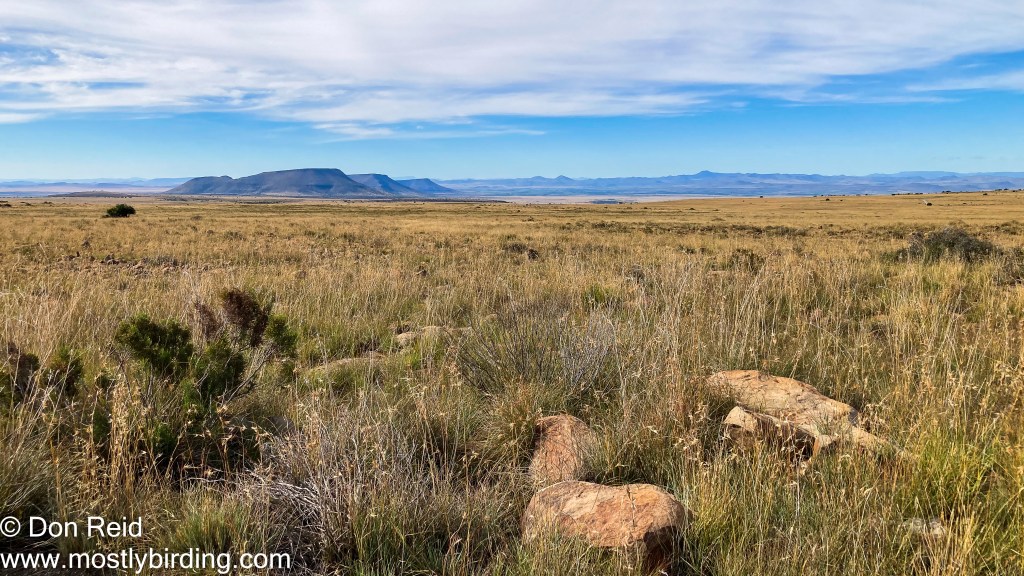
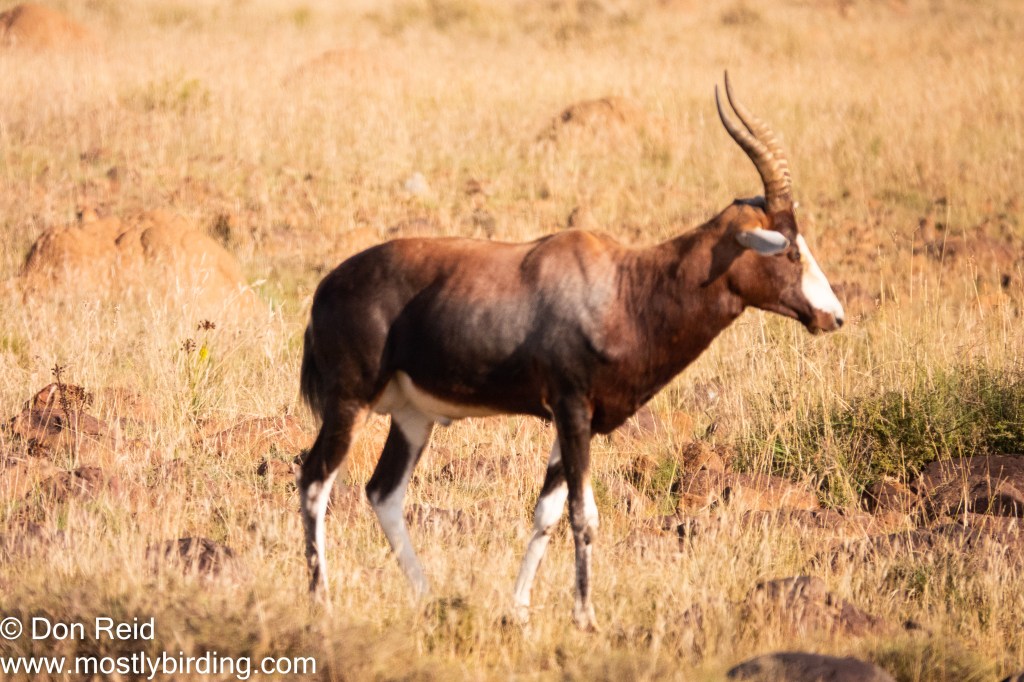

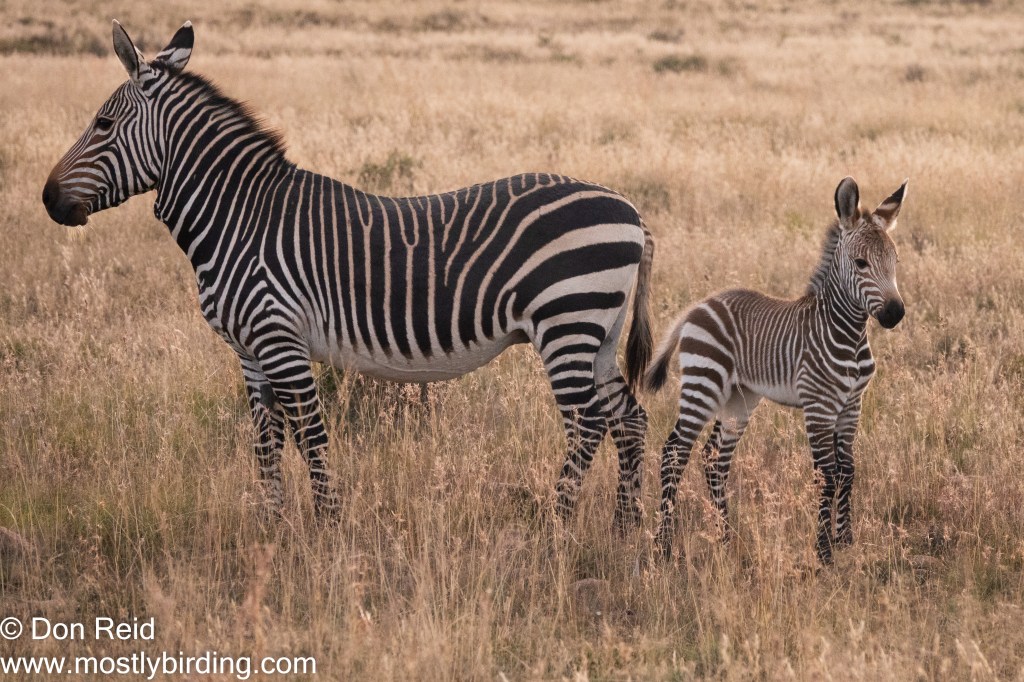
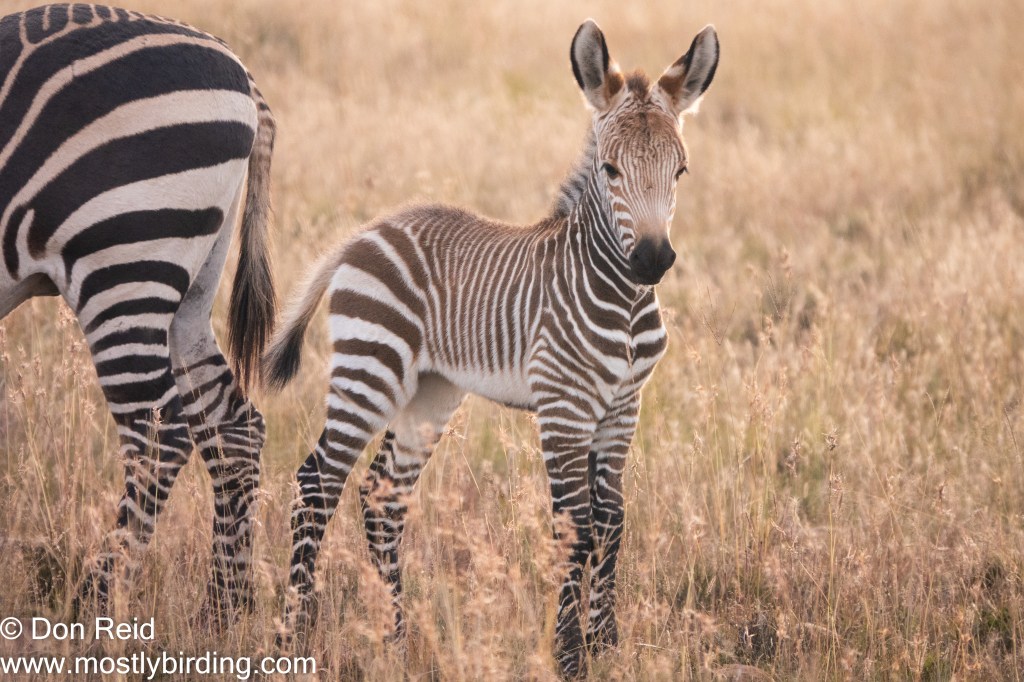
The birds were not plentiful but several of those we came across were species not regularly seen outside of this particular habitat – three species of Lark on the ground (Eastern Long-billed, Spike-heeled and Red-capped Larks), Scaly-feathered Finch and Neddicky in the few trees and a glimpse of Grey-winged Francolin just showing in the long grass.
This handsome Jackal Buzzard was no doubt on the lookout for prey –

Larks are a favourite of mine – not the most striking of birds, in fact just the opposite, but that is their attraction and finding them in grassland habitat feels like a real accomplishment, often followed by some serious research to confirm the ID.

We had completed the full circuit of Rooiplaats Loop and started descending the road which winds down from the plateau when I heard a call which caused me to brake sharply – it went like this
Gerda said “what is it, why did you stop so suddenly” – my reply, in an elevated state of excitement, was something like “oh boy, this is a bird I’ve been trying to find for a looooong time”
We were into perfect habitat for what I thought it was – rocky hillsides with large boulders – and after a quick scan I found it on one of the boulders – African Rock Pipit!
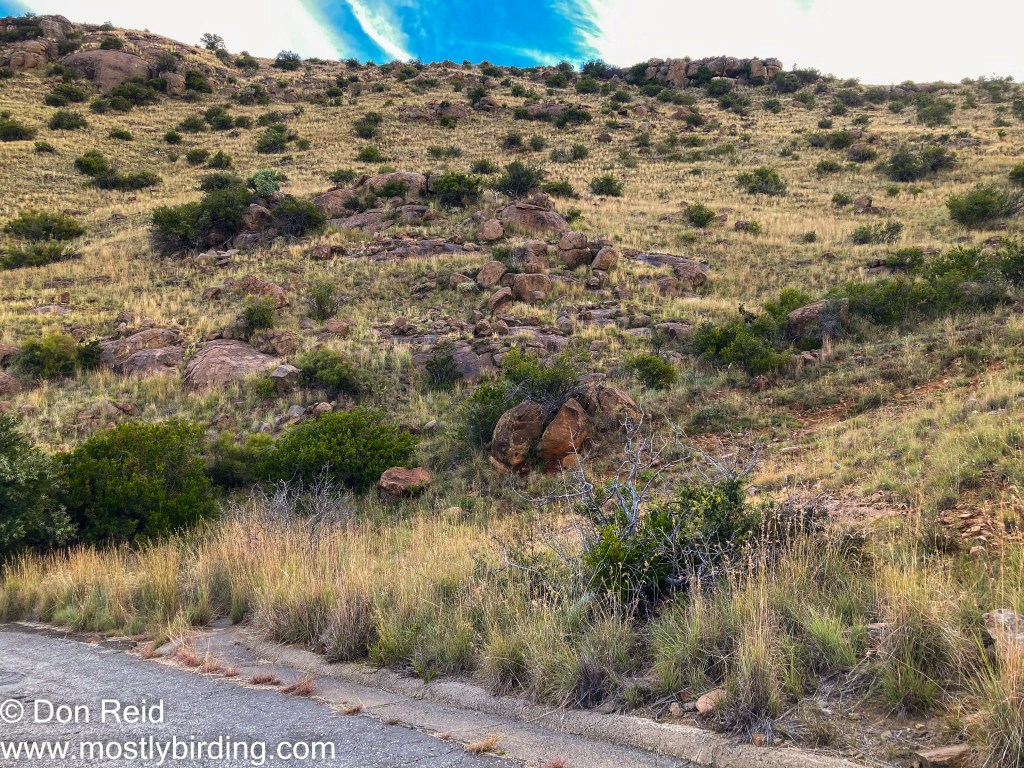
The Pipit. a lifer for me, was perched on the boulder and emitting its distinctive, repetitive call every few seconds and I was doubly pleased to be able to get a few decent photos of it in action
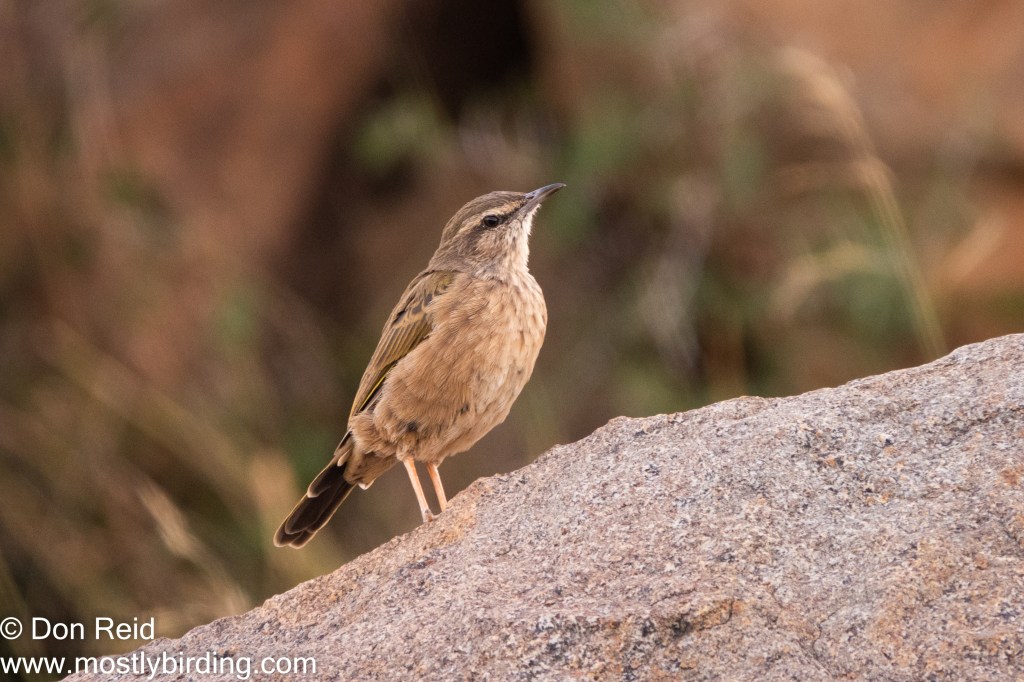

To celebrate we went to the park’s restaurant for dinner that evening and, unsure what to expect, were very pleasantly surprised to find brisk service, good food and friendly personnel to round off an outstanding day.


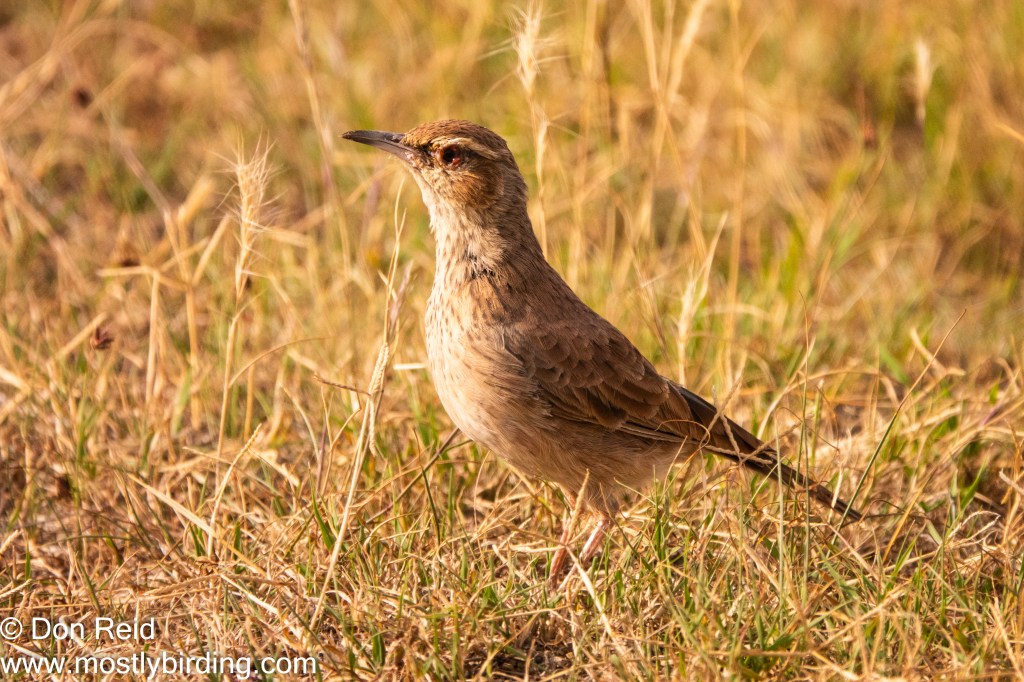
I must go back … what fun to return to the MZNP, even though I spent a couple of days there during July! It is a lovely place to visit. We usually camp (lots of birds in the camping area) but have stayed in the chalets too. What were they thinking when they installed that heavy – and very uncomfortable – furniture on the stoeps? Beautiful photographs all.
The park definitely has a special attraction – and not too far to travel from where you are.
We love MZNP too. You had some awesome birds. Great getting the Rock Pipit
I was really pleased with the Rock Pipit – can’t say I had been searching for it for years but it was always in the back of my mind that it was an obvious gap in my life list. Of course as usually happens, once I had seen it the first day, we had several sightings over the next few days, even one calling from behind our chalet, so it went from desirable lifer to ‘trash bird’ in a matter of days!
Hi Don I enjoyed your Mountain Zebra park post. Trust everything is going well with you and Gerda. We have also moved down to Stilbaai last year this time and are enjoying life down here. We also visited MZP this past couple of days and also got the African Rock Pipit, but it was not a lifer for me as I had a previous brief siting of it at Wakkerstroom. However my ARP was very easy. We were staying in the last unit at the top, number 22 and the ARP was almost constantly present on the large boulders just behind the cottage. Beautiful singing. I agree with your views of MZP being one of SANP’s best parks to visit. My one daughter is now living in Ramsgate so Cradock (MZP) is a very convenient halfway stopover for us on the way to KZN. We will visit the park regularly in future. Whenever you are in the Hessequa area for atlassing, please give me a call. I am also now part of the Hessequa atlassing team and am trying to build my own full list of Hessequa pentads. Interesting birding and as you well know very beautiful landscapes during the respective seasons, aloes, proteas, fynbos, canola, wheat, etc, etc. Please convey our regards to Gerda. Kind regards Francois Furstenburg 0825786933
Sent from my iPad
>
Hi Francois – great to hear from you and glad you enjoyed MZP as much as we did. We have spent 11 of the last 18 months in Mossel Bay so are quite at home there and enjoy the lifestyle and countryside. A permanent move is not too far off ….
At the beginning of this year I set myself a target of atlasing all 43 pentads in the Mossel Bay municipal area at least once but life matters have got in the way and my atlasing has been limited so far. We got back to Pretoria this week so I hope to be visiting some of the local birding spots during these early summer months when things start to get lively again.
Once we are settled in MBay I will definitely be in contact for some atlasing in Hessequa, parts of which I know quite well
Regards Don